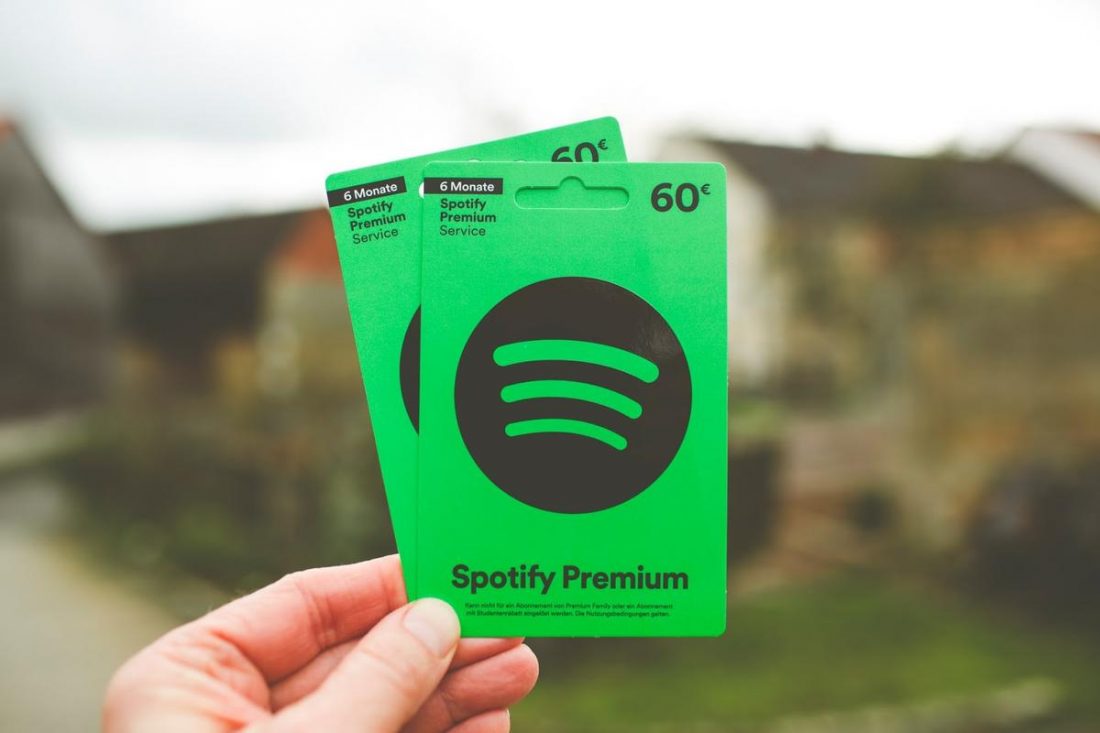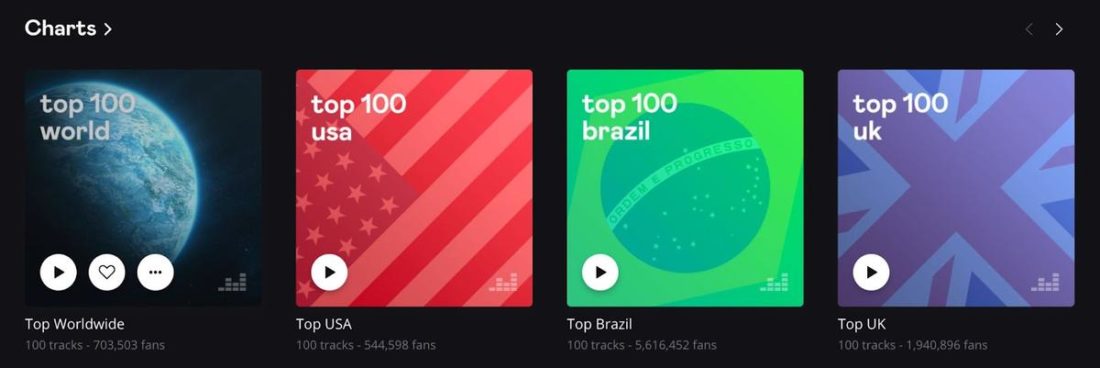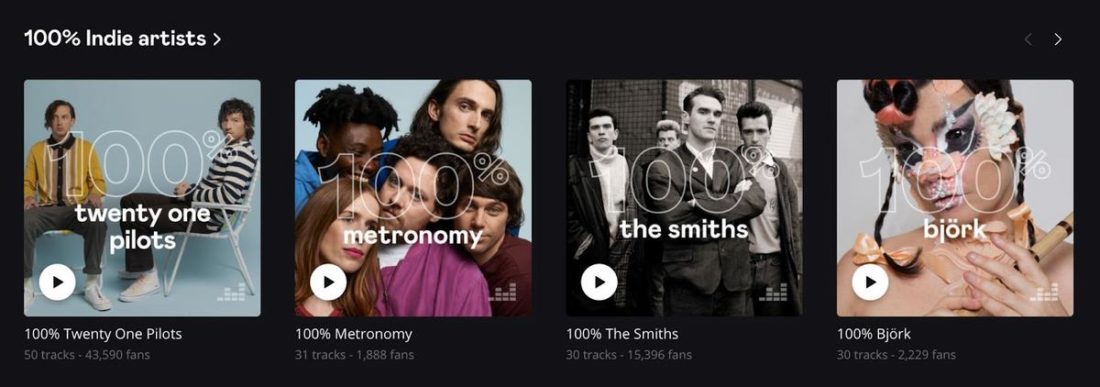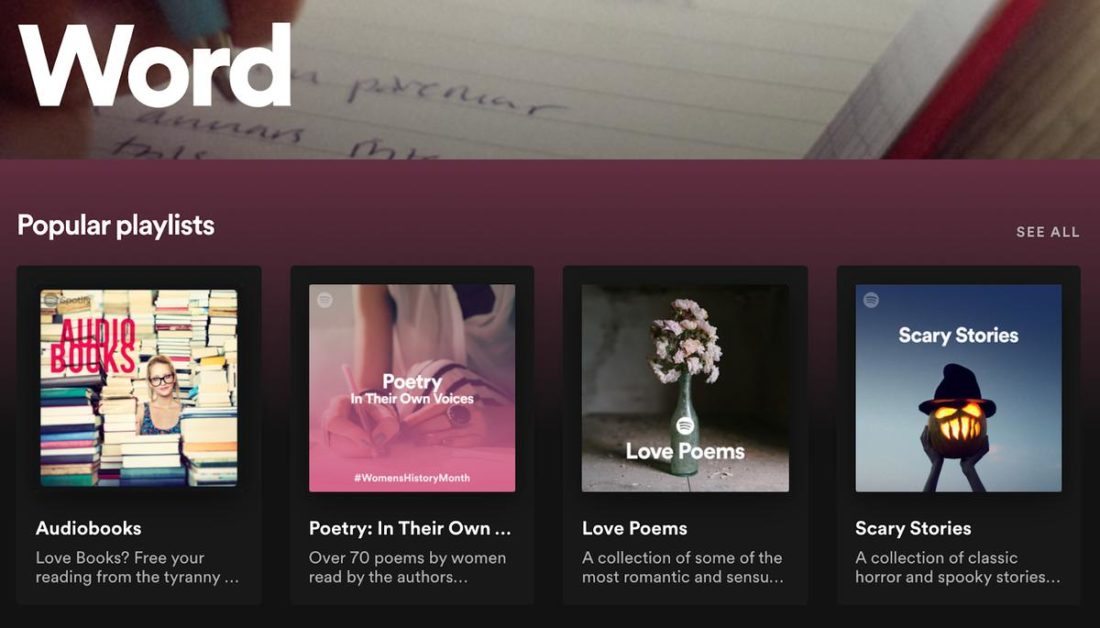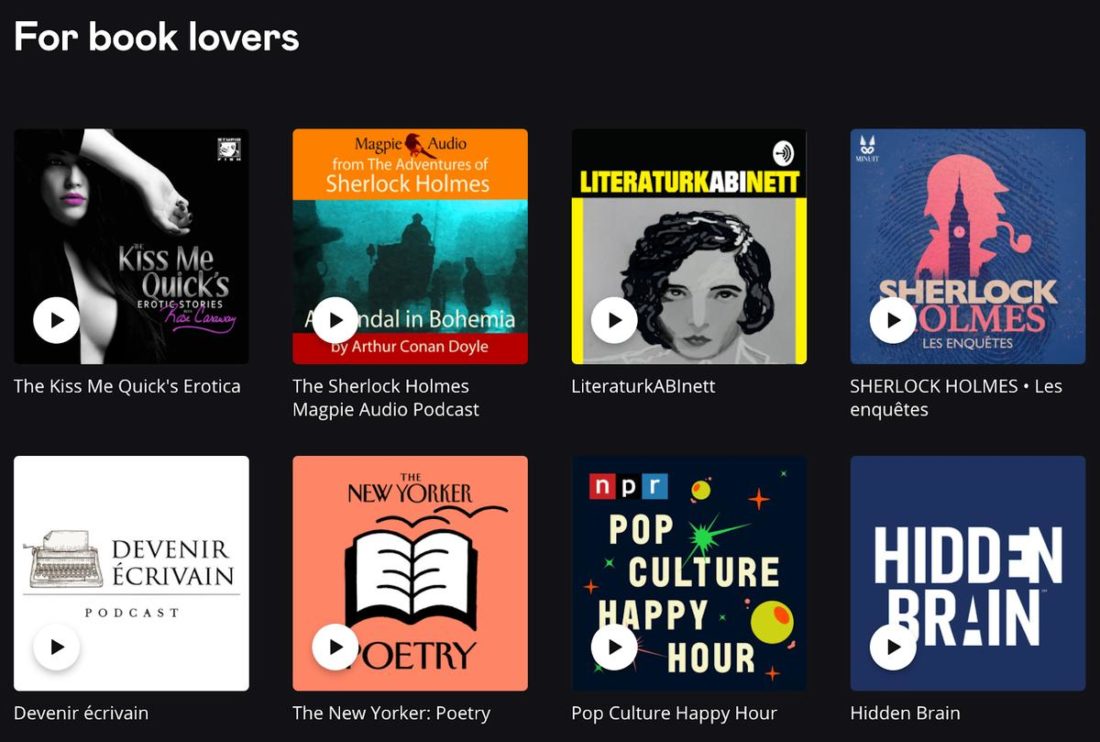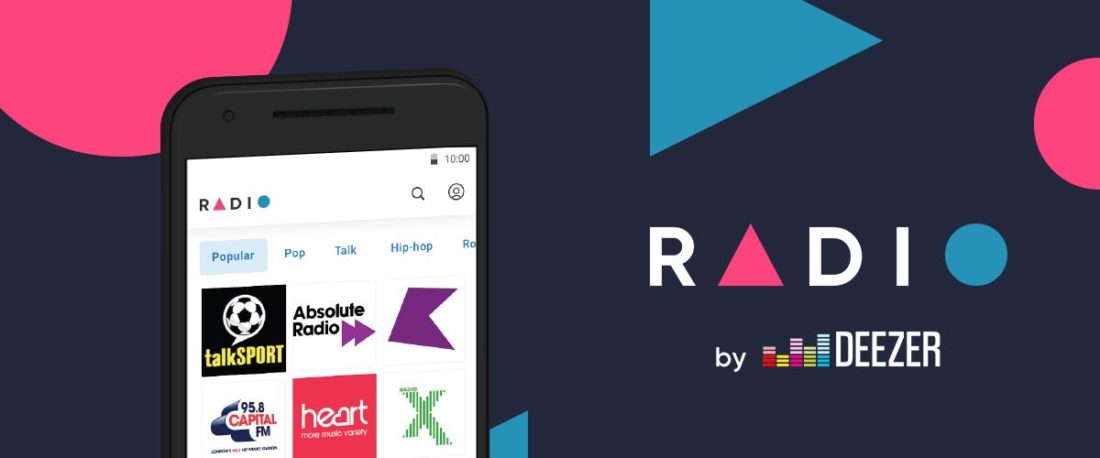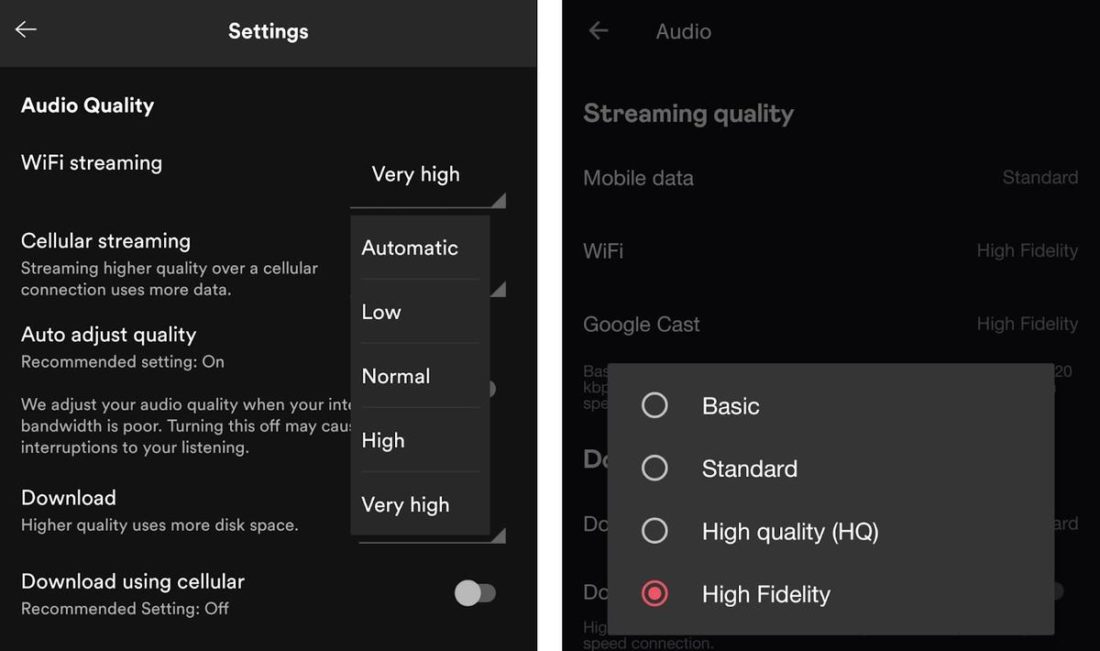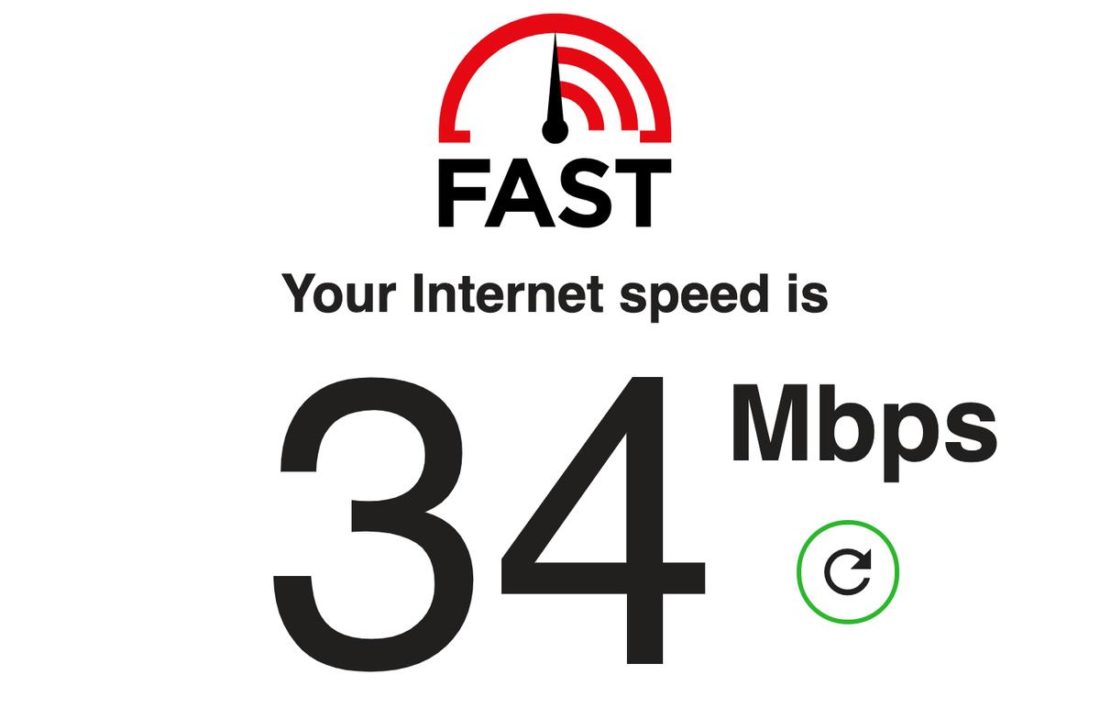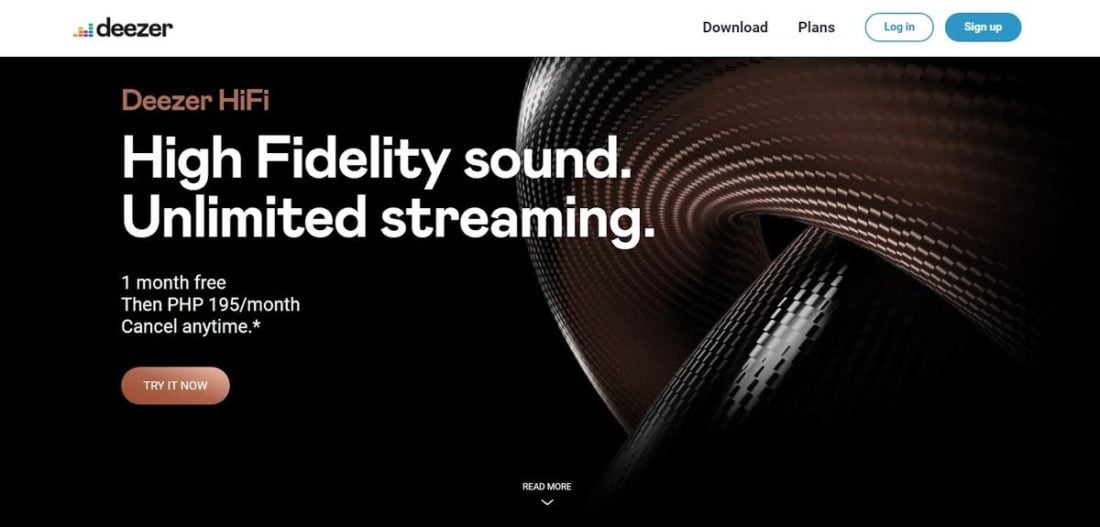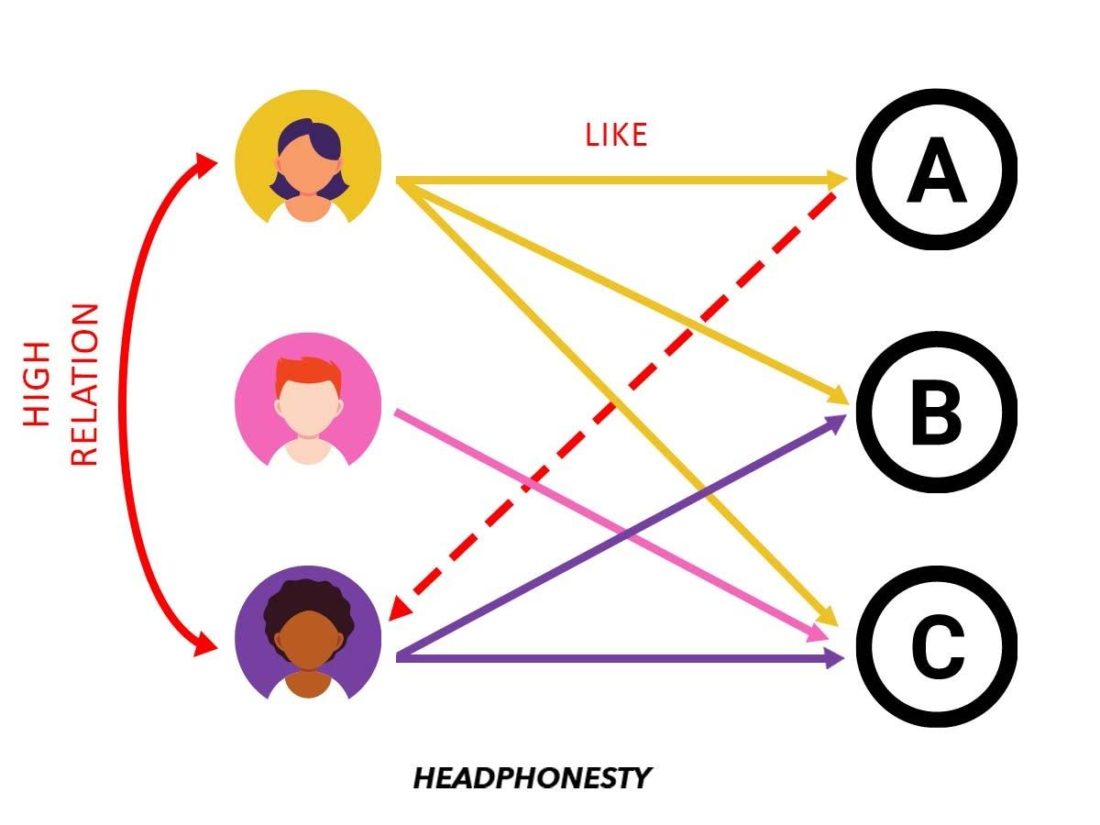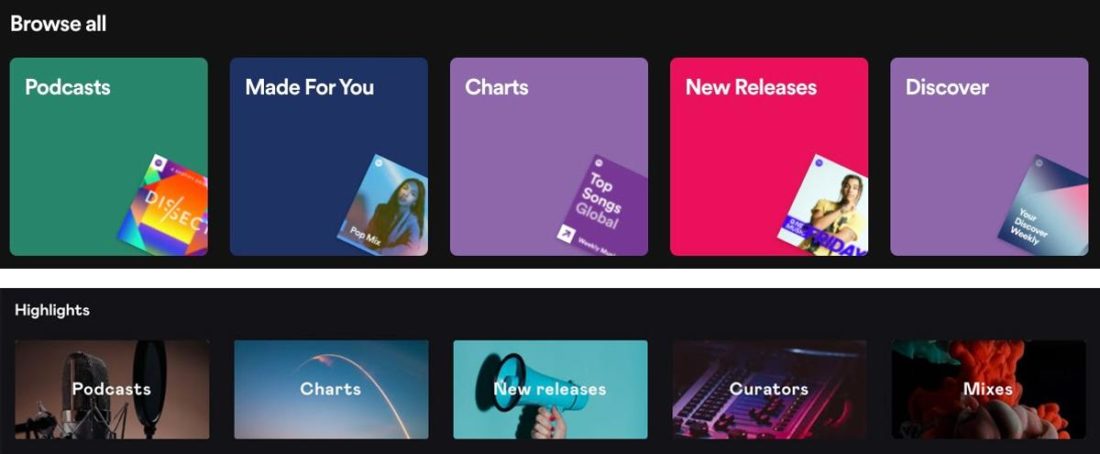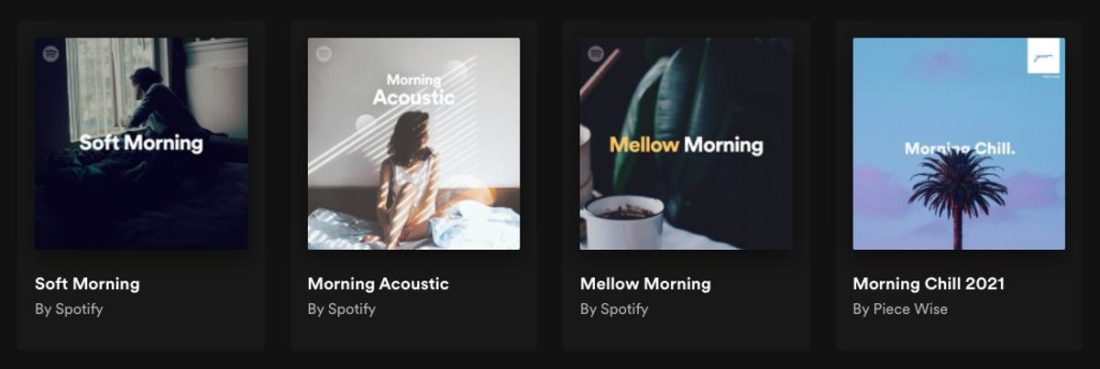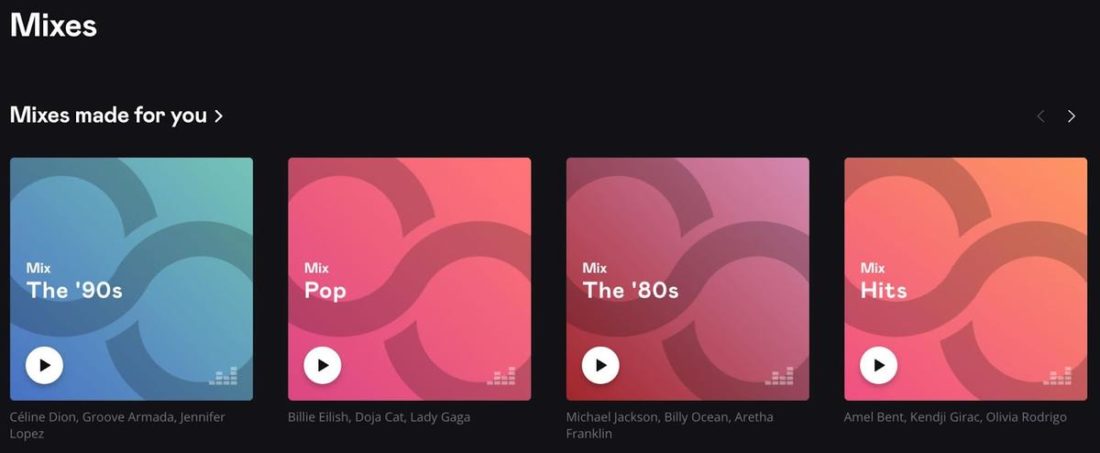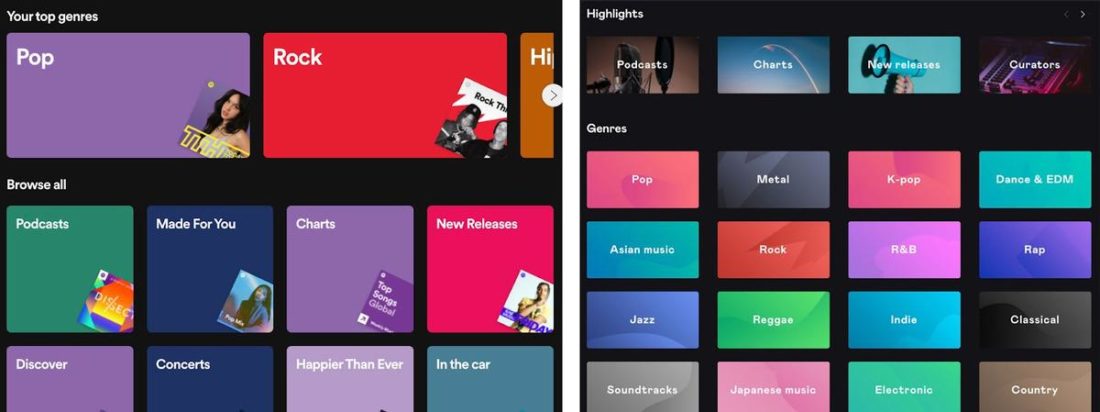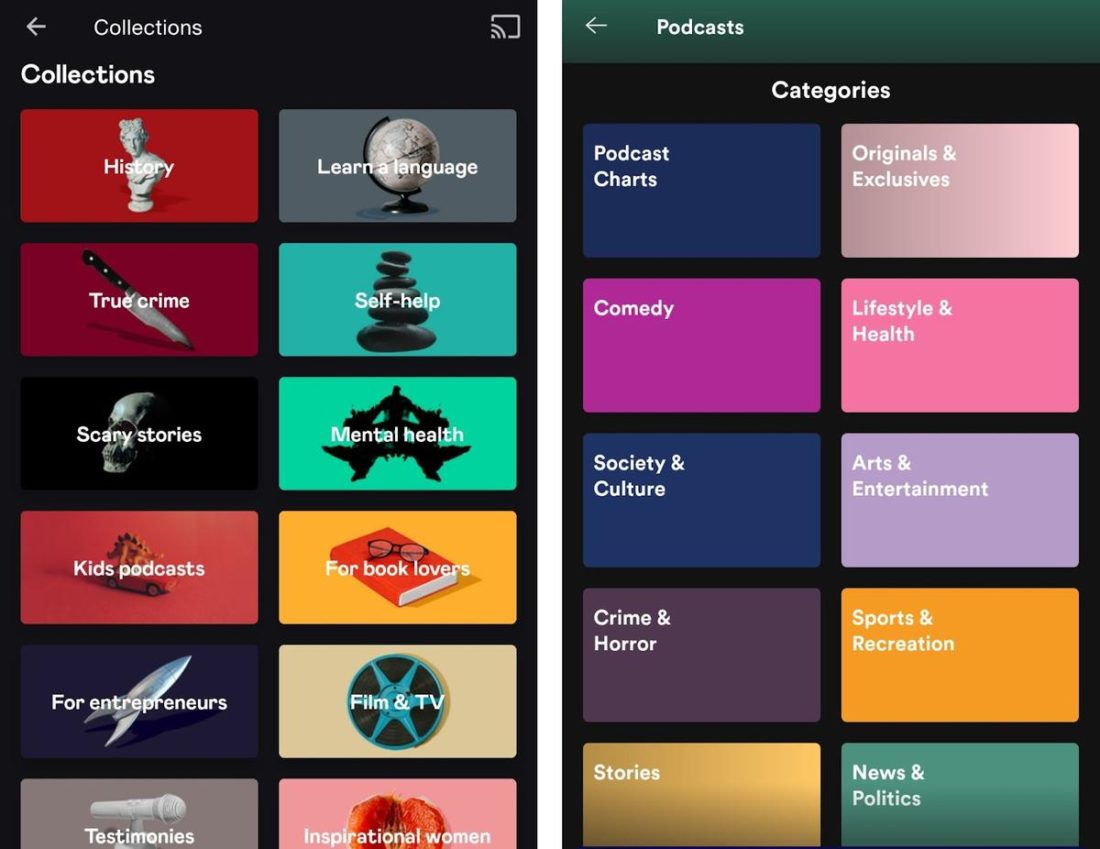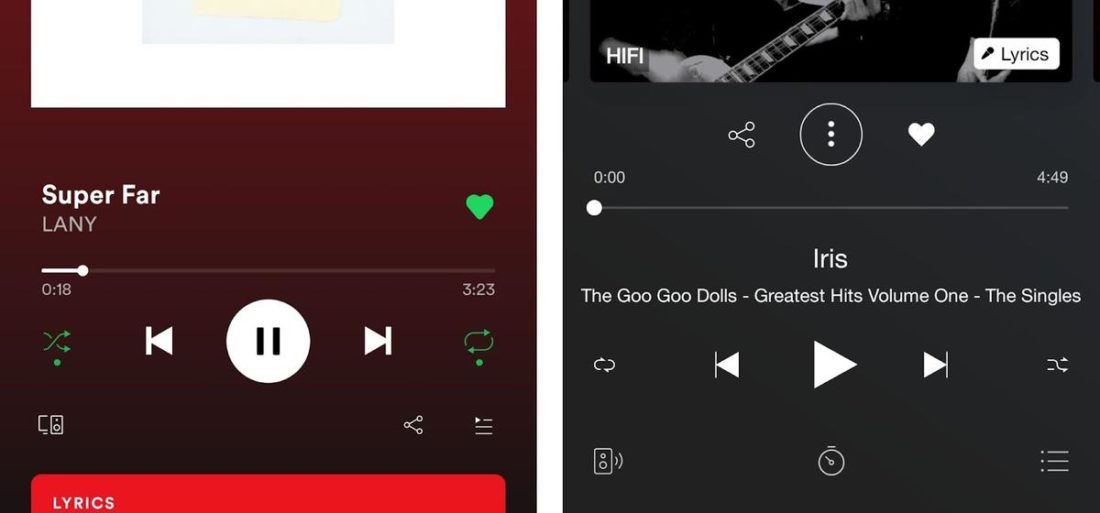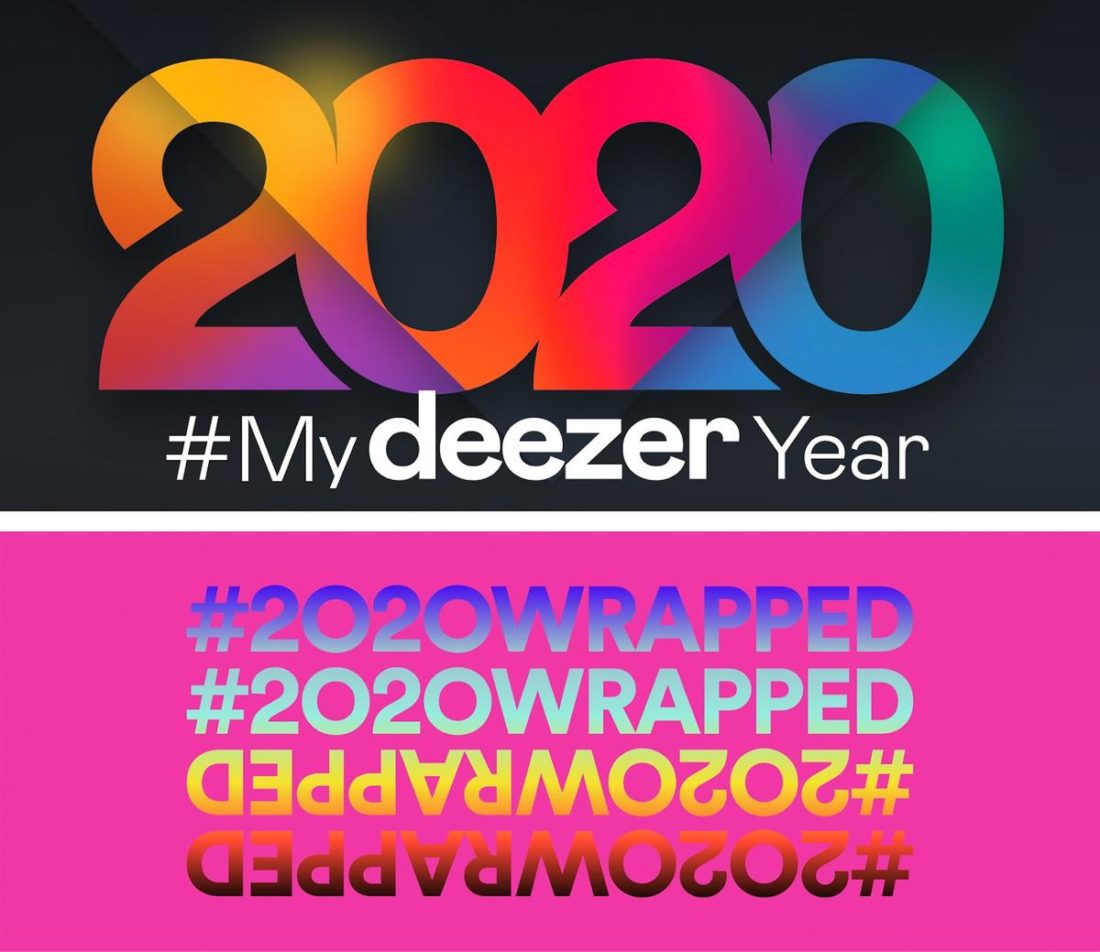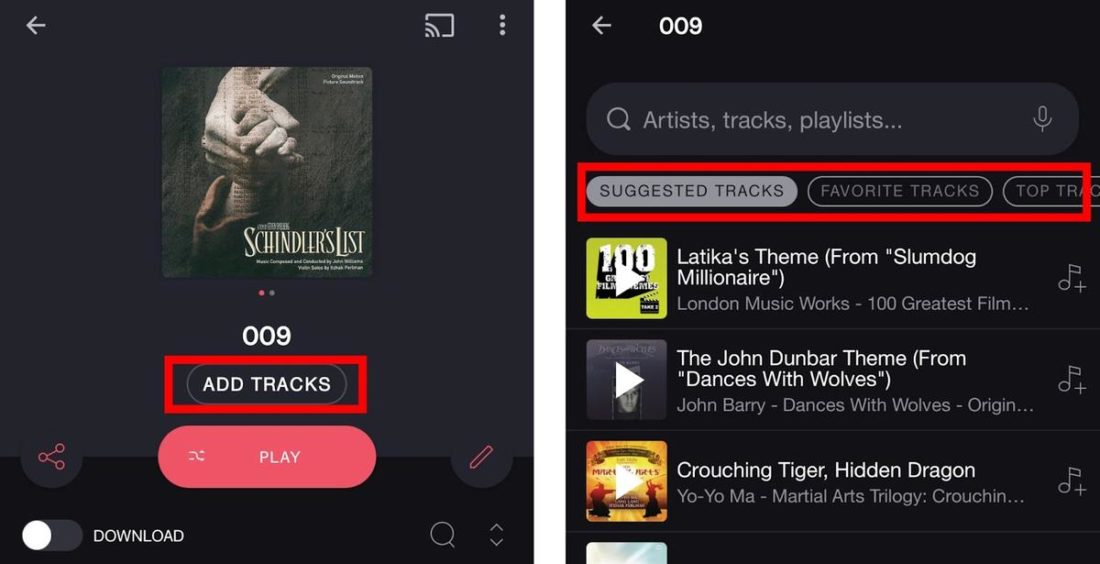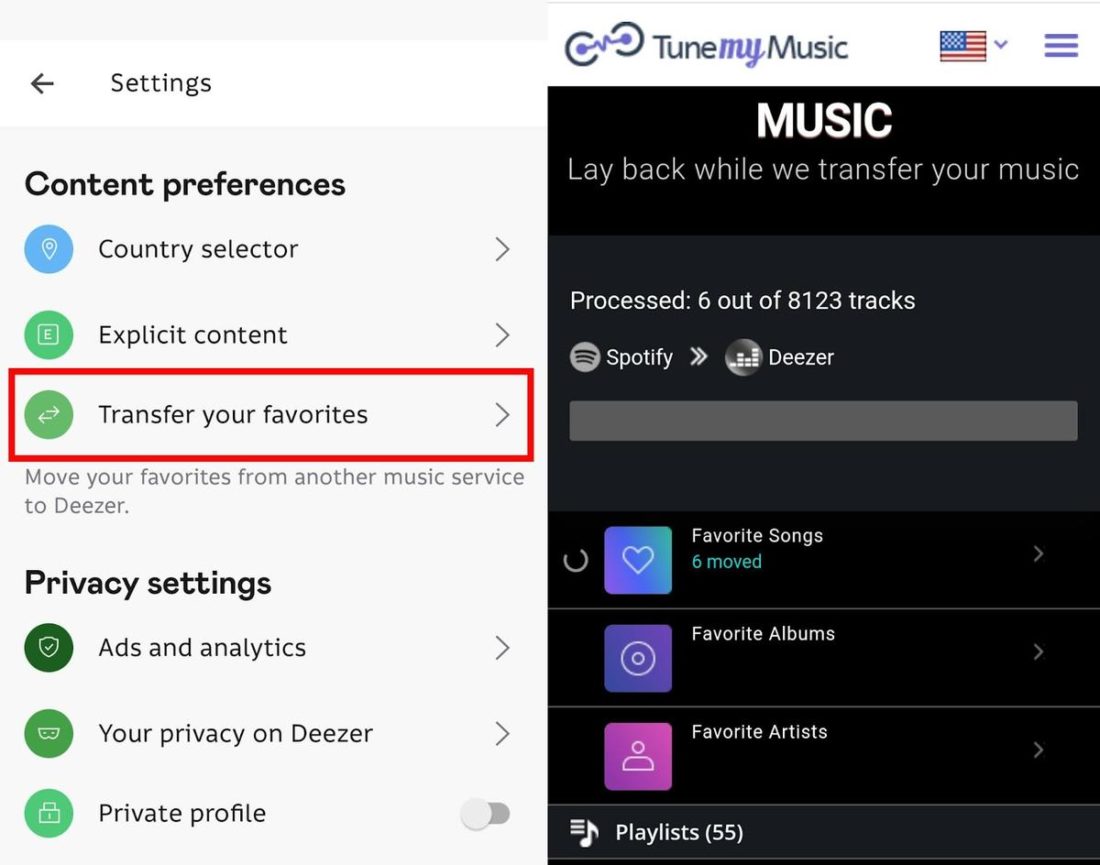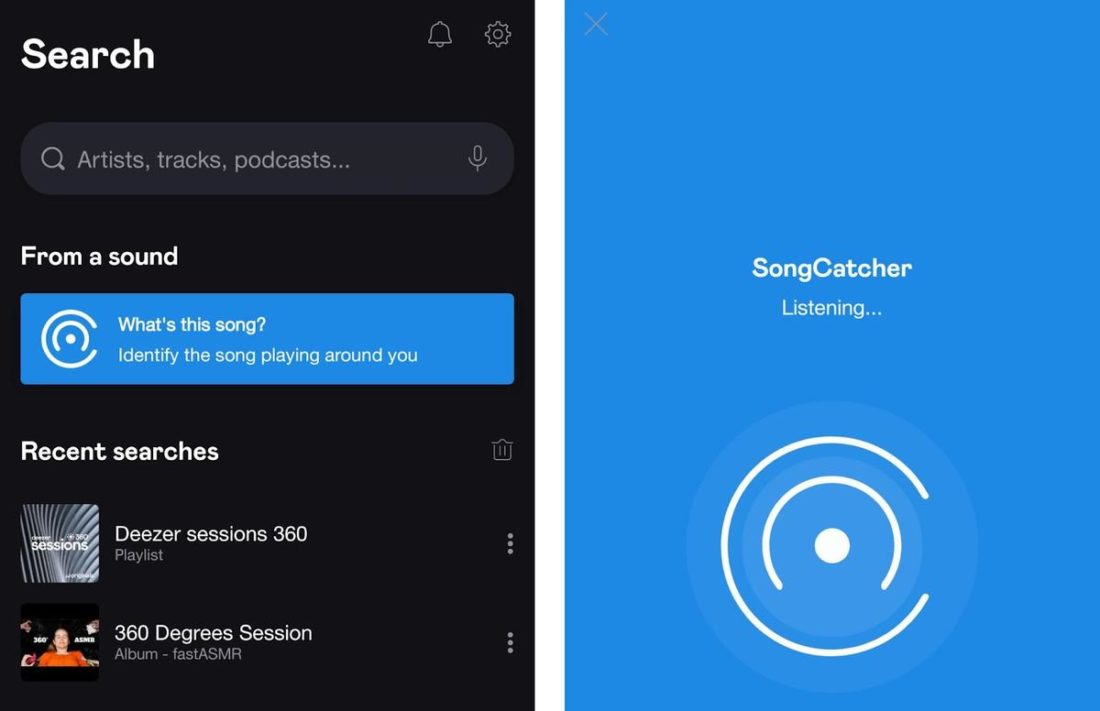When you think of the “top” or “best” music streaming apps, the first that typically comes to mind is Spotify. With its undeniable global reach, massive content library, and slick aesthetics, it’s easy to see why. However, Spotify’s popularity has recently taken a few hits. And more discerning music fans may be starting to look for alternatives as Spotify becomes more embroiled in controversy. As you can imagine, this didn’t sit well with a lot of people. So, if you’re one of those looking to make a change, whether it’s for yourself or to better support the artists you love, it might be time to pick the little guy instead – in this case, Deezer. Deezer, despite having a smaller user base, similarly has a lot to offer in terms of content and discovery features. But if you’re still skeptical, we’ve broken down those features and made a close comparison with Spotify, so that you can determine whether it’s time to jump ship or not. Let’s get into it!
The Overview
Spotify
Spotify is a Swedish music streaming service developed by Daniel Ek and Martin Lorentzon. It was designed to address music piracy and provide a convenient way to listen to music. Spotify was first launched in Europe in 2008 and subsequently hit one million subscribers by 2011. Today, Spotify is one of the most popular streaming services for music and podcasts. According to Spotify’s Q2 2021 performance report, the app saw a 22% growth in monthly active users and a 20% growth in paid subscribers from the previous year. As of July 2021, Spotify is available in 184 countries. It’s also home to over 82 million tracks, 3.6 podcast titles, and 4 billion playlists.
Deezer
Deezer is a French music streaming service that debuted in August 2007. It was developed by Daniel Marhely and Jonathan Benassaya after an earlier version of the app (Blogmusik) was shut down in 2006 due to copyright issues. Deezer subsequently saw rapid growth and expansion between 2009 and 2013. It was during this time that Deezer debuted its new subscription scheme, including new desktop and mobile apps. It partnered with French telecom service Orange S.A., which further drove up new subscriptions to the app. Deezer also launched in several countries across Europe, Africa, Asia, South America, and the Middle East during this time. As of July 2021, Deezer is available in 188 countries. However, its user base is significantly smaller at just 16 million active users compared to Spotify’s 406 million. Deezer is currently home to 90 million music tracks, 160,000 podcast titles, and over 32,000+ radio stations.
Pricing & Plans
Spotify and Deezer have almost identical subscription and pricing schemes. Here’s a quick overview of how much each of those plans cost:
Over 80 million songs Full access to all content Ad-free on-demand playback Up to 320 kbps audio quality Option to import local files Downloads and offline listening Family plans have an option to create profiles for kids Multi-device compatibility 30-day free trial
While Spotify and Deezer have quite a bit in common, there are also key differences to take note of when choosing between the two services:
Additional HiFi tier
The most obvious difference is Deezer’s HiFi feature and Spotify’s lack thereof. Deezer offers 1411 kbps CD-quality audio, whereas Spotify’s highest overall audio quality setting is capped at 320 kbps. However, that could all change soon. During their 2021 Stream On event, Spotify disclosed the coming of a new HiFi plan later this year. There have been no new updates since the initial announcement, but sightings of the new feature have surfaced on Twitter and Reddit, indicating that Spotify HiFi is well on its way.
Radio feature
Deezer subscribers can access over 32,000 local and international radio stations for sports, weather, or news updates. Spotify, on the other hand, doesn’t offer traditional radio on the app.
Price difference
In April 2021, Spotify implemented a controversial price hike for its subscribers in the US, UK, and Europe. In the UK, the price increase covers the Family, Student, and Premium Duo plans; whereas in the US and Europe, it only covers the Family plan. Currently, the price for Spotify’s Family plan in the US is $15.99/month. However, this is still lower than Deezer’s Family plan, which is at $17.99/month. Deezer Premium also come at even higher prices due to the inclusion of HiFi audio. However, you can opt to pay annually for a 25% discount.
Subscription perks
Subscribers of Spotify’s Student plan get discounted access to popular movie streaming services Hulu and SHOWTIME. In contrast, Deezer doesn’t offer any additional subscription perks at the time.
Additional subscription plans
Spotify offers an additional Premium subscription plan called Premium Duo. It’s a plan designed for two people to share and is great for those trying to save a buck or two. Deezer, on the other hand, only offers Premium and Family plans, and a 50% Student discount.
Verdict: Which is more worth it?
Spotify does have an affordable Premium Duo option and discounted access to Hulu and SHOWTIME. But with Deezer, you get more features, such as access to thousands of radio stations and CD-quality audio. Plus, it could be frustrating to know that the Spotify rates change highly based on where you reside. For instance, if you live in the UK, you’re going to be paying a bit more for Spotify’s Family, Student, and Premium Duo plans compared to those who live in the US, thanks to the price hike.
Amount of Music Content
Both Spotify and Deezer have massive music libraries with over 82 million and 90 million tracks, respectively. Both services are also licensed by all the major record labels, as well as independent distributors like Merlin. So the good news is that you definitely aren’t going to have any problems finding your music on either platform.
Spotify
Spotify’s music library can be found in the ‘Search’ section on both the desktop and mobile apps. The section looks pretty straightforward. It offers an overview of the different music genres and categories you can find on the app, making it easy for new users to get their bearings in the face of so much content to explore. Playlists are truly Spotify’s specialty. And there are over four billion of them designed to fully flesh out all the music genres. Each genre always has several playlists dedicated to new releases, popular hits, and viral trends. There’s also a ‘Charts’ section, which gives you the top 50 most popular songs from as many as 53 territories worldwide. So, you’re definitely in good hands if you’re a mainstream music listener. Spotify’s ‘Indie’ section is also noteworthy. Again, there are a lot of editorial playlists to choose from. Some are curated by mood (Sad Indie), activity (Indie Workout), or era (Early Alternative); but many others offer less generic themes, like vaporware, pulp, and Terra Incognita. There’s also a category called ‘Fresh Finds’, which gives you a weekly wrap-up of the newest releases from independent artists.
Deezer
Similarly, Deezer’s library can be accessed through ‘Search’ on mobile, or ‘Browse’ on the desktop app. Listeners are greeted with the same ‘boxy’ summary of music genres and categories on the app, but much more organized since the different types of content are separated. I personally like it more because it allows you to quickly find the music you want. There aren’t as many music genres highlighted in Deezer’s ‘Browse’ section, but the music curation is just as good as Spotify. Each genre has a ton of playlists to choose from and has entire sections devoted solely to new releases and mainstream hits. Deezer’s ‘Charts’ section also shows the most popular songs from over 70 countries. It even goes a step further by showing you which playlists and albums are the most streamed. Deezer’s ‘Indie’ section looks particularly extensive. Like Spotify, it has the typical editorial playlists that are focused on moods, eras, and activities. But Deezer puts a newer spin on the genre by adding sections like ‘Midnight Mixtapes’, which showcases some favorite songs from the Indie artists themselves; and ‘100% Indie Artists’, which offers a comprehensive glimpse into an artist’s discography.
Verdict: Which is more worth it?
There isn’t really a glaring difference between Spotify and Deezer in terms of the amount of music content. As expected, both apps have different approaches to playlist curation, and the choice will be down to what your preferences are. Ultimately, both still have massive collections and a great mix of mainstream and indie music to pick from, so you won’t go wrong with either platform.
Content Variety
In addition to music, Deezer and Spotify also offer a selection of non-music content, such as podcasts, audiobooks, radio, and more. Here’s a closer look at what each platform provides:
Spotify
Spotify is quite formidable when it comes to podcasts. With over 3.6 million podcast titles, Spotify is still consistently expanding its portfolio and improving its capabilities. In 2019, it acquired several podcast production companies like Anchor, Gimlet Media, The Ringer, and Parcast to help boost its content. It also acquired Podz in June 2021, a newsfeed tool designed to improve podcast discovery on the app, making it easier for listeners to find new shows that they might like. Thanks to its aggressive expansion tactics, Spotify’s podcast collection is overflowing with content. Podcast lovers will have a lot of genres to explore, and a wide range of shows to indulge in, including exclusives like Dax Shepard’s Armchair Expert, The Joe Rogan Experience, The Michelle Obama Podcast, Nas Talks, and Alex Cooper’s Call Her Daddy. Spotify also has an existing collection of audiobooks that can be found in the ‘Word’ section. However, it’s mostly made up of classical literature selections and doesn’t really offer any modern titles. A partnership with Storytel and the acquisition of Findaway is aimed to change this. The former is a Swedish audiobook streaming service hosts over 500,000 audiobook and Ebook titles, and the latter is a leading audiobook distributor. Lastly, those looking for a live experience can make it happen through Spotify Greenroom, a live audio feature that allows podcasters to host live discussions that their fans can tune in and listen to. The feature, however, requires you to download a separate app, which might be inconvenient for some people.
Deezer
Podcasts can also be found on Deezer, but its collection is significantly smaller at only 160,000 titles. Despite that, Deezer still manages to provide subscribers with a diverse selection. Most of the popular shows found on Spotify, including those mentioned in the previous section, are available on Deezer as well. In addition, Deezer also provides a large selection of exclusive original foreign-language podcasts, which is something you don’t really see on Spotify. Like Spotify, Deezer also offers audiobooks, but the feature is only available in Germany, Austria, and the Netherlands. It’s definitely a huge miss for Deezer considering there’s a sizable audience for audiobooks worldwide. It does, however, offer a ‘For book lovers’ category, possibly in an attempt to fill in the content gap in regions where audiobooks aren’t available. The section itself is decent enough, and mostly contains book club podcasts, poetry, and some classical lit audiobooks like Conan Doyle’s The Adventures of Sherlock Holmes. One of Deezer’s more defining features is live radio, which is absent from Spotify’s feature line-up. On Deezer, subscribers have access to over 32,000 radio stations where they can get their fill of the news, sports updates, and talk shows. This feature might’ve made up for the lack of audiobooks on the platform, but unfortunately, Deezer’s radio feature is also limited to a select number of regions.
Verdict: Which is more worth it?
Overall, both platforms have diverse offerings. Spotify gives subscribers better ways to enjoy content with live audio and more efficient discovery tools. Deezer, on the other hand, provides a good variety of foreign language content and access to thousands of local and international radio stations. Unfortunately, the limited availability of radio and audiobooks places Deezer at a disadvantage. And while Spotify doesn’t offer a radio feature, it outperforms Deezer by a mile with an extensive podcast library and audiobooks collection that’s available everywhere that Spotify is.
Stream Quality
Spotify offers five audio quality settings, while Deezer offers a total of four (including HiFi). Here’s the bit rate distribution for each quality setting on both platforms:
Buffer time
At their highest audio settings, both Spotify Premium and Deezer Premium deliver 320 kbps audio quality. At that bitrate, both apps use up about 150 MB of data per hour. Both also deliver lag-free playback at 34 Mbps, which was my internet speed at the time of testing. And even on days when my connection was crappier than that, I was still getting smooth playback. Deezer’s HiFi setting, on the other hand, streams at 1411 kbps, which can use up to 600-700 MB of data per hour. This not only puts your data plan to the test but could also cause laggy playback if you aren’t streaming on a strong connection. In my case, even with a connection speed of 34 Mbps and up, I was still getting noticeable buffering on some songs.
Audio quality
Spotify Premium vs Deezer Premium
In terms of sound quality, it’s good to know that Spotify Premium streams in Ogg Vorbis format, while Deezer Premium makes use of the MP3 format. Both of these audio codecs are lossy, open-source formats and exhibit some differences in sound quality. Here’s a quick overview of the technical aspects that contribute to those differences: However, it’s also important to remember that sound quality isn’t solely about the audio format used. Good sound quality is influenced by several other factors, such as how good the original recording/mastering is, how your personal audio gear sounds, and how refined your hearing is. That said, the difference between Ogg Vorbis and MP3 formats isn’t too drastic. Using my Sabbat E12 Ultras, I listened to the same songs on both platforms to make a side-by-side comparison of the sound quality. And at the end of the day, both Premium plans gave me decent enough sound quality for an enjoyable listening experience.
Spotify Premium vs Deezer HiFi
Deezer HiFi, on the other hand, makes use of FLAC (Free Lossless Audio Codec), which is the default codec for high resolution music streaming. This “lossless” format means that no audio data is lost during compression. The result? A highly accurate reproduction of the original audio file, with all its subtle dynamics preserved. While revisiting some tracks from old Aion albums, I could definitely hear a noticeable difference, especially when paired with my ATH-M50x headphones. On the track Yearn for Heaven, in particular, there was a more defined separation between all the instrumental layers, the higher notes sounded clearer and more resonant, and the soundstage more spacious. I could even pick out instruments I initially wasn’t aware were part of the track. It was like listening to these songs for the first time all over again.
Verdict: Which is more worth it?
Spotify Premium might offer slightly better audio quality than Deezer Premium for its standard audio settings. But Deezer HiFi understandably steals the show with its CD-quality audio option. The choice between the two will depend on your personal stance regarding audio quality, though. If you aren’t particular about it, a Premium subscription to either platform will work just fine. In contrast, if you prefer a more polished and pristine sound, or if you want to make the most of those pricey cans you just bought, then you’ll be happy with Deezer HiFi.
Music Discovery
Music streamers rely on good discovery features to find new music and new artists. For some, it can be a dealbreaker when an app can’t quite deliver on that front. The good thing is that both Spotify and Deezer have pretty good discovery features in place. The question is, which one is better? Let’s find out. Deezer approaches music discovery with the help of Collaborative Filtering. This basically gives you recommendations based on what people with similar tastes as you like. Spotify, on the other hand, uses a hybrid algorithm consisting of three types – Collaborative Filtering, Natural Language Processing, and Raw Audio Modeling. The latter two types work by analyzing a song’s lyrics and melody. With help from these discovery algorithms, listeners on both platforms can find new content in the following ways: Both platforms excel in music curation and do a good job in fleshing out the different music genres. It’s helpful because it allows listeners to digest the large music collections on both apps, making discovery easier. Spotify, in particular, is really good at this not just because of the sheer amount of playlists it offers, but also because of how specific they can be. I personally like Deezer’s slightly different approach to music discovery through ‘Mixes’. ‘Mixes’ are endless playlists customized by mood, genre, or era. It’s nice because it liberates you from the decision-making process, allowing you to just pick a general category, press play, and sit back. And if you don’t like where your mix is heading, you can redirect the algorithm by simply choosing a different genre of songs to play. There’s no shortage of personalized playlists on Spotify and Deezer either. Both apps have a ‘Made For You’ section containing playlists for new releases (Release Radar, Friday Releases), music discovery (Discover Weekly, Monday Discovery), and customized playlists based on tracks you’ve liked (Daily, Daily Mix). As a longtime Spotify user, I’m well aware of the prowess of Discover Weekly and Release Radar. I’ve found a good number of songs and artists through the feature, though it’d be great if the recommendations weren’t limited to just 30 songs per playlist. While I did enjoy using the feature, after several weeks I noticed that it took a little longer to calibrate to my tastes and often ended up playing more tracks from my library instead of new ones.
Verdict: Which is more worth it?
Deezer undoubtedly has some pretty good discovery features, most of which probably require more time to calibrate. But those who want more accurate and responsive recommendations will be happier with Spotify, thanks to a hard-working hybrid algorithm that really analyzes your music choices and adjusts quickly. Listeners may also have a more enjoyable listening experience with the extensive amount of playlists and different themes to explore on Spotify.
Ease of Use
Spotify and Deezer have similar dark layouts with boxy content tabs. On the desktop app, Deezer manages to make everything look more streamlined with smaller tabs that take up less space. This means less scrolling around, making all the content easier to digest at first glance. Moreover, while both apps are generally easy to navigate, Deezer also shines in terms of how organized and well-presented its content is. For example, Deezer’s ‘Browse’ section is sorted by genre and category, with a separate portion just for podcasts. In contrast, Spotify’s ‘Search’ section feels sort of thrown together. Main music genres like ‘Pop’, ‘Rock’, and ‘Jazz’ are mixed in alongside categories like ‘Tokyo’, ‘Comedy’, and ‘In the Car’ without rhyme or reason. Users new to the app may find this confusing, as I still sometimes do. As for podcasts, both platforms have an overview of the general categories available on the app. Deezer, however, goes a step further by providing ‘Collections’, which offers more specific categories like ‘Scary Stories’, ‘Esports’, and ‘Testimonies’. It’s a convenient feature that allows users to immediately zero in on their favorite content. You can even choose podcasts based on episode duration, which is perfect if you have a few minutes to kill, or if you want to listen to something longer. On their desktop apps, both Spotify and Deezer have a stationary sidebar that lets you see all the main sections of the app and the contents of your library. However, Deezer doesn’t come with Spotify’s handy drag-and-drop feature that makes building playlists a breeze. Meanwhile, both platforms have good functionality with drop-down menus that pop up when you long-press on a song, artist, or album on the mobile app. However, this feature seems to respond more snappily on Deezer, whereas on Spotify there’s a slight delay as the menu loads up. I personally find the look of Deezer’s ‘Now Playing’ screen a lot more appealing. All the functions are grouped closely together, and I actually like having the menu button right in the center instead of up in the corner like it is on Spotify. It makes accessing the functions you need a little bit quicker. You can also open your audio settings and sleep timer without leaving the window, which is another nice touch by Deezer.
Verdict: Which is more worth it?
I was won over by Deezer’s attention to detail and intuitiveness, and how there’s an obvious focus on making it easier for the listener to navigate its library. There are categories and labels for every type of content offered, so you won’t ever feel lost while navigating the app. Deezer also provides features that make it easier to locate or narrow down the kind of content you want, which is always a big plus.
Additional Features
When it comes to additional features, once again, Spotify and Deezer share many similarities. Both offer song lyrics, a built-in equalizer, multi-device connectivity, and collaborative playlists. Listeners can also get a yearly wrap-up of how they listened to music with Spotify Wrapped and #MyDeezerYear. On the flip side, there are a few features unique to each app. Spotify, for instance, provides a friend activity feed that lets you see what your friends are currently listening to. Listeners can also check out ‘Storyline’ and ‘Behind the Lyrics’ for interesting bits of trivia about the artist or a song’s lyrics. This feature is often accompanied by Canvas, which are eye-catching, looping videos displayed on the ‘Now Playing’ screen. Deezer offers some cool and unique features of its own, too. Both apps provide recommendations within user-created playlists, but Deezer lets you filter your recommendations by ‘Suggested Tracks’, ‘Favorite Tracks’, and ‘Top Tracks’. Most of the suggestions are pretty spot on and perfect for those who enjoy creating themed playlists. Another feature on Deezer is 360 Reality Audio, which Spotify doesn’t support. It’s a spatial audio technology that offers realistic 360-degree audio that enhances HiFi audio. An extremely useful recent addition is Deezer’s music transfer function. The built-in feature is powered by Tune my Music. It lets you transfer songs and playlists from 16 different music streaming platforms, without needing to download extra apps or pay additional fees. The whole process is as simple as selecting ‘Transfer your favorites’ in the app settings. It’s so convenient and even works perfectly for free plan users. Lastly, Deezer also offers SongCatcher, a feature that helps you identify unfamiliar songs and lets you save them to your library. It’s a convenient way to find new songs without resorting to third-party apps.
Verdict: Which is more worth it?
Deezer’s additional features are definitely more worthwhile if you’re looking for a better listening experience. Its playlist recommendations are pretty accurate and deliver great suggestions based on whatever playlist theme you have going on. SongCatcher is extremely handy for music discovery and is a feature I find myself using often. The music transfer is also a clever little addition that’ll make it super easy to transfer all your music if you’re considering making the switch to Deezer. Lastly, those looking for a more immersive audio experience and have the gear that can handle it can do so with 360 Reality Audio. On the other hand, Spotify’s friend feed is a good way to find new music. But there’s only so much you can do with features like Canvas and Storyline, which isn’t even available for all songs on the app.
How Much Do Spotify and Deezer Pay Artists?
Streaming payout rates have long been an issue on music streaming platforms. Spotify is known for having one of the lowest payout rates in the industry at $0.0033 per stream. Deezer, on the other hand, offers almost double of Spotify’s rates at $0.0064 per stream. But what makes Deezer entirely different is its User-Centric Payment System (UCPS). UCPS allocates your subscription payments only to artists you listen to the most. In many ways, this gives users more control in the way they support artists. In a study conducted by Centre National de la Musique (CNM) and funded by the French government, UCPS was shown to have a small but positive impact on genres and artists with smaller audiences.
Deezer’s advocacy for diverse music streaming landscape.
Deezer also makes it a point to support artists and music genres that aren’t getting as much engagement. It does this by excluding fake artist accounts from royalty computations, to ensure only real artists benefit. Support programs like Deezer x FAC Masterclass and Deezer NEXT also reflect this. The masterclasses help mentor artists “about streaming, marketing, social media, and PR”. While Deezer NEXT helps promote new artists in different markets or regions they’re specifically relevant to. In contrast, Spotify has gained a lot of attention over the number of fake artist accounts on the platform, designed to boost streaming numbers using questionable methods. Many of which are backed by big labels, or created by uploaders who have learned how to game Spotify’s algorithm with clever SEO tactics. To be fair, Spotify has its own artist support initiatives. During the pandemic, it launched the Artist Fundraising Pick. This allowed fans to send cash support directly to artists and their fundraisers. Spotify also donated $10 million to MusiCares’ COVID-19 Relief Fund. After the Joe Rogan fiasco, Spotify pledged $100 million to help “historically marginalized groups”. Unfortunately, the move felt more like a knee-jerk reaction to the backlash, especially because of the vagueness surrounding its intended beneficiaries.
Which Should You Go For?
Before we wrap up, here’s a summary of all the good things each platform offers: Another possible reason why people go for Spotify is simply that it’s available everywhere. So, even though Deezer has a lot of great features, the fact that some of its content is region-locked is a big hindrance. However, if you happen to live in the areas that Deezer fully services, this app is definitely worth looking into. So, which app should you go for? As mentioned earlier, both apps have well-stocked music libraries, so there’s no need to worry about the amount of music available. However, those who enjoy traditional radio programming will certainly get more out of the thousands of local and international stations offered by Deezer. As for Spotify, there’s no denying that it does provide great content variety and music discovery. Those who rely a lot on an app’s music discovery capabilities will be more than satisfied with Spotify’s spot-on recommendations. Its massive collections of podcasts and audiobooks are also a big bonus for those who like mostly non-music content. As for sound quality, Deezer is an obvious choice for those who want an exceptional listening experience. But with Spotify HiFi already in the works, this will eventually no longer be a defining feature between the two, and you’ll have to consider the other available features to help you make a decision. As for artist treatment, both apps have made moves to support artists. Deezer, however, seems more clear on the direction they want to go and is purposeful in the steps they’re taking. Deezer’s goal of implementing UCPS is indicative of their belief in the value of music and music fans. It shows respect to all artists and music genres. It also shows respect for the individuality of people’s musical tastes. And though they haven’t yet succeeded with UCPS, the possibilities are exciting.
Conclusion
We hope this comparison review has been able to highlight all the ways that these two apps are similar. We also hope it serves as a reminder that sometimes the underdog is worth checking out too, despite what all those slick marketing schemes would have you think. But as with anything music-related, your choice will ultimately depend on your personal preferences and what works for you. Hopefully, this article has helped you gain a better understanding of that. How did you find our review? Was it helpful? If you’d like to share your experiences with both apps, please drop us a line or two in the comments section. We’d love to hear your thoughts.


